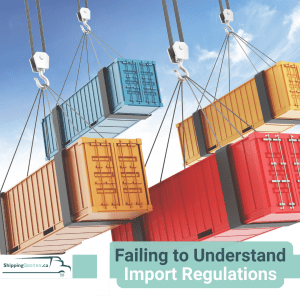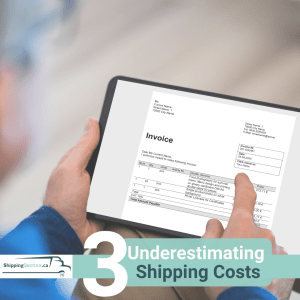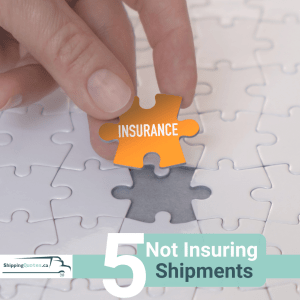5 Common Mistakes entrepreneurs make when importing and how to avoid them
As a business owner, importing goods can open the door to new opportunities, but it can also come with challenges if not done correctly. In our experience working with countless entrepreneurs, we’ve identified 5 common mistakes that can hurt your bottom line, delay shipments, or lead to unnecessary headaches. Whether you’re a seasoned importer or just starting out, knowing how to avoid these pitfalls is crucial to streamline your supply chain and keep your costs in check. Let’s dive into the most frequent mistakes and how you can avoid them for smoother, more cost-effective importing.
1 Failing to Understand Import Regulations
 Mistake: Entrepreneurs often overlook the specific import regulations and customs requirements for the country they are importing into. This can lead to delays, fines, or even confiscation of goods.
Mistake: Entrepreneurs often overlook the specific import regulations and customs requirements for the country they are importing into. This can lead to delays, fines, or even confiscation of goods.
How to Avoid: Research the import regulations thoroughly before purchasing goods. Consult with our team to ensure all necessary documentation is in order and compliance is met.
2 Not Properly Classifying Goods
Mistake: Incorrectly classifying products with the wrong HS (Harmonized System) code can result in incorrect duties and taxes, leading to overpayment or penalties.
How to Avoid: Familiarize yourself with the correct HS codes for your products. If unsure, consult with our team who can help you classify the items correctly to avoid costly mistakes.
3 Underestimating Shipping Costs
Mistake: Many entrepreneurs underestimate shipping costs, focusing only on product price without considering shipping fees, duties, taxes, and other hidden costs like insurance or warehousing.
How to Avoid: Get detailed shipping quotes upfront, including all possible costs (e.g., shipping, duties, taxes, insurance). Make sure to calculate these expenses when determining the profitability of the imported goods.
4 Ignoring Lead Times and Delays
Mistake: Entrepreneurs often miscalculate lead times, not accounting for shipping delays, customs clearance, or other logistical issues, which can disrupt supply chains and customer deliveries.
How to Avoid: Plan for potential delays by adding buffer time to your shipping schedule.
5 Not Insuring Shipments
Mistake: Skipping insurance to cut costs is a common mistake. Without insurance, entrepreneurs risk losing their shipment to damage, theft, or loss without any recourse.
How to Avoid: Always purchase insurance for your shipments, especially for high-value goods. The small cost of insurance is worth the peace of mind and protection against unforeseen losses.
In conclusion, importing can be a powerful way to grow your business, but it’s important to navigate the process carefully. By avoiding these common mistakes—like overlooking hidden costs, neglecting regulations, or choosing the wrong shipping method—you can save time, money, and frustration. With the right planning and partners in place, you can streamline your importing process, ensuring your goods arrive on time and within budget, helping your business thrive in a competitive market. Let us help you make importing easier and more cost-effective.
Ready to take the guesswork out of importing? Our expert freight consultants are here to guide you every step of the way and help you avoid costly mistakes. Get in touch today for personalized advice
Looking for more tips to make your importing process smoother and more cost-effective? Check out our blog for in-depth insights, expert advice, and practical solutions to help you navigate the world of shipping with ease.
Stay updated with the latest tips and insights in the world of shipping and logistics! Follow us on our social networks for expert advice, industry news, and exclusive offers.

